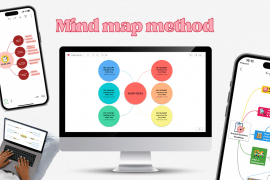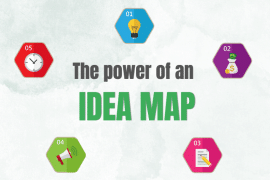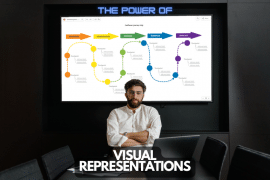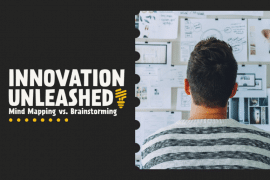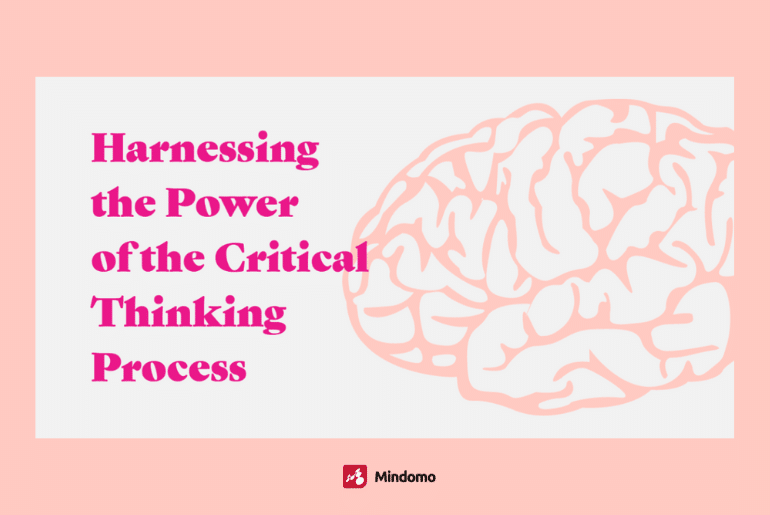
Have you ever found yourself overwhelmed by the sheer volume of information you’re exposed to on a daily basis? Have you wondered whether it’s possible to sift through so much noise? And even if it is possible, is it worth it?
The answer to all of these questions lies in an essential but often overlooked skill: critical thinking.
Critical thinking is a powerful intellectual tool. Like a mental Swiss Army knife, it equips you to handle any situation thrown your way. As a critical thinker, you can appraise evidence, identify the most important element of a data set, and more.
Critical thinking isn’t just about absorbing information; it’s about actively engaging with it. It goes beyond answering the question of why knowledge is important. It explains how that knowledge can be used to change your life – and the world.
It’s the art of questioning assumptions, examining facts, drawing conclusions, and making informed decisions. It’s a skill that can help you cut through the noise and achieve more in less time.
Are You Ready to Hone Your Critical Thinking Skills?
How do we develop this vital skill?
There are a host of tools you can begin using today for just that purpose. And once we’ve examined the basics of critical thinking, we’ll explore some of those tools. That way, you can cut through the noise and discover the truth, no matter what.
Are you prepared to revolutionize the way you interact with information?
Are you ready to cultivate a skill that will benefit you from the classroom to the boardroom and beyond?
If so, join us on this exciting journey to delve deep into the essence of critical thinking. Along the way, we’ll explore its importance and learn how to nurture it from childhood through adulthood.
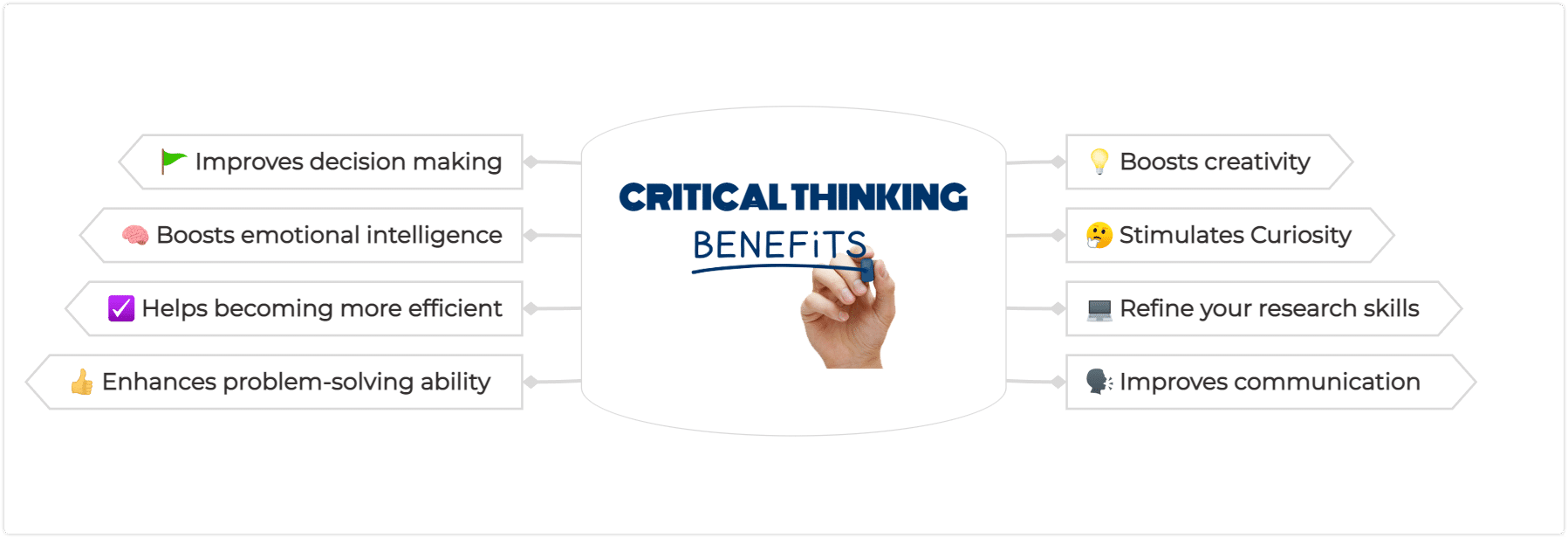
How Do You Define Critical Thinking?
Let’s get started with the most basic question of all.
It’s a question that often arises in educational circles and beyond, “Is critical thinking a skill that can be sharpened?”
Undeniably, the answer is a resounding yes.
But critical thinking isn’t a simple skill that can be pinned down to a single definition. It’s a multifaceted, intellectually disciplined process. And understanding it calls for deep examination.
Active Engagement in Critical Thinking
When we refer to critical thinking, we’re talking about an involved process that demands active engagement. It’s a process that requires us to be fully immersed and participatory.
It’s about skillfully conceptualizing ideas and thoughts. In the realm of critical thinking, ideas aren’t accepted at face value. Instead, they are inspected, dissected, and analyzed under a philosophical and anthropological lens.
It’s a kind of philosophical thinking that isn’t satisfied with pat answers. Instead, it seeks to dive as deeply into a subject as possible.
Applications in Critical Thinking
Application is another key facet of critical thinking.
It’s not enough to merely understand concepts or theories. A critical thinker must also apply this understanding effectively. This involves taking a principle learned in one context and using it to solve a problem in another.
Real critical thinking goes beyond merely thinking and crosses the line into problem solving, being an essential part of some problem solving strategies.
Analyzing & Synthesizing in Critical Thinking
Analyzing and synthesizing information are also at the heart of the critical thinking process.
It’s about breaking down complex information into manageable parts. This allows you to examine the parts individually and synthesize them. That way, you can draw more accurate judgments and conclusions.
But in order to do this, you’ll need persistent effort and a strong sense of logical inquiry. So these are essential critical thinking concepts.
Evaluation in Critical Thinking
Furthermore, critical thinking involves constant evaluation.
It demands the ability to appraise evidence and assess its credibility and relevance. In doing so, a critical thinker considers all possible solutions, alternative viewpoints, and contextual considerations. Critical thinking is about weighing the pros and cons and drawing conclusions that are warranted by the evidence at hand.
Reflective thinking is an essential aspect of critical thinking, too. It involves looking back at our thought processes, recognizing any potential biases or fallacies, and refining our thinking accordingly. It’s a thoughtful way of self-improvement and learning that leads to the development of a critical thinking disposition.
These are essential skills to hone if you’re going to improve your critical thinking ability.
Critical Thinking & Problem Solving
Moreover, critical thinking involves a problem-solving element.
It requires the ability to recognize problems, both big and small, and apply all the skills mentioned earlier to solve them. The goal is not just to solve the problem but to do so in a way that is logical, evidence-based, and considerate of all relevant criteria.
To sum things up, critical thinking is indeed a skill. It’s one that involves an intellectually disciplined process of actively conceptualizing, applying, analyzing, synthesizing, and evaluating information. It’s a tool that we can employ to navigate our everyday life more effectively and make well-informed decisions.
As we proceed, we’ll delve deeper into these facets and explore how we can further enhance our critical thinking skills.
Unpacking Critical Thinking
To truly understand critical thinking, we need to unravel it and scrutinize its constituent elements.
Let’s use a creative thinking tool to help us do just that. Visualize a mind map diagram with the term ‘critical thinking’ nestled at its core. From this central node, several branches extend out, each representing an integral part of critical thinking.
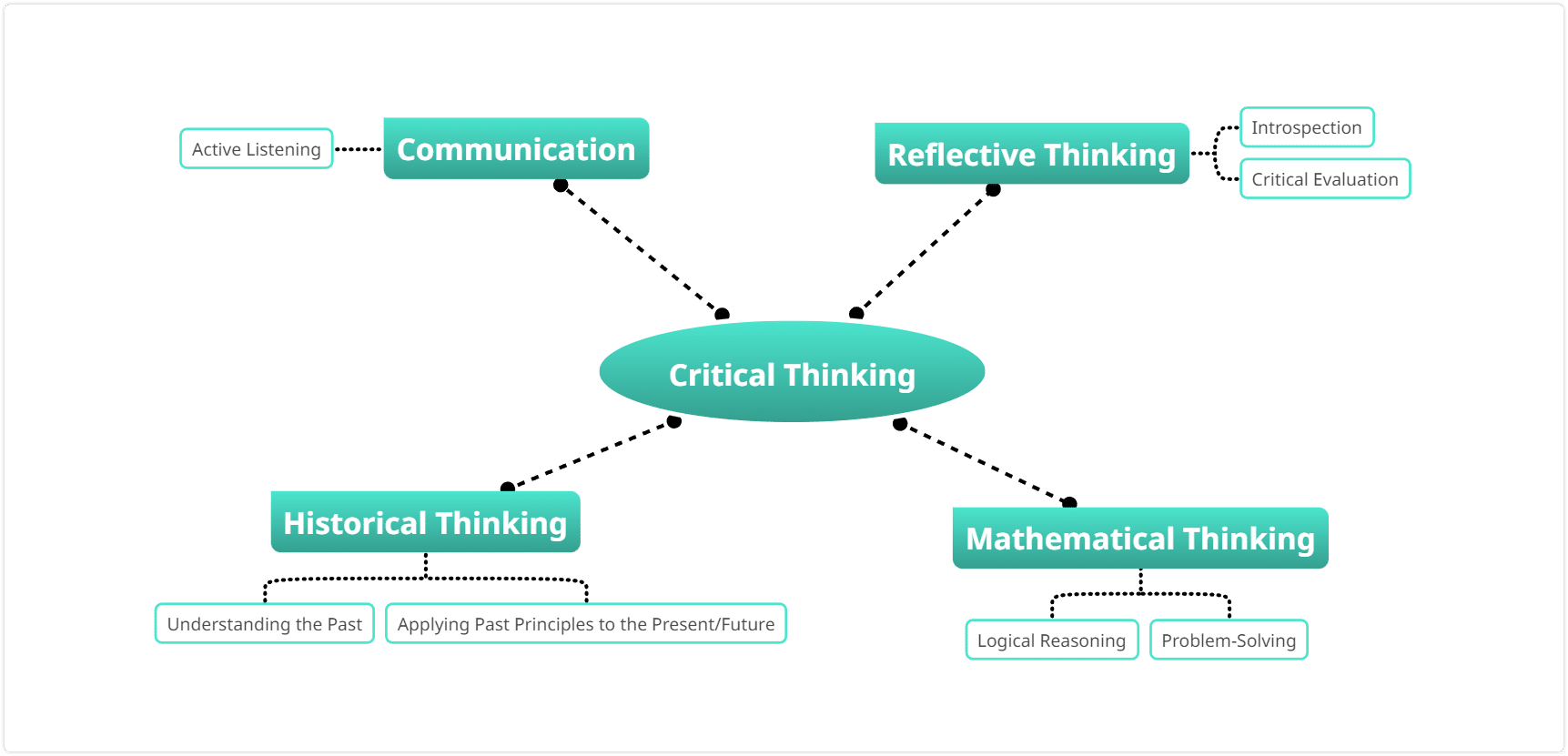
Organizing information visually like this (using mind map diagrams) aids in comprehending the multi-faceted nature of critical thinking.
Reflective Thinking
One of these branches represents ‘reflective thinking.’ This involves introspecting and critically evaluating our thoughts and actions.
It’s about assessing our performance, identifying areas of improvement, and making the necessary changes – a key aspect of personal and professional development.
Mathematical Thinking
Another branch represents ‘mathematical thinking.’ This type of thinking involves logical reasoning and problem-solving skills.
It’s about identifying patterns, making calculations, and employing logical reasoning – essential skills that serve as the foundation of critical thinking.
Historical Thinking
Extend the mind map further, and you’ll find a branch representing ‘historical thinking.’ It’s about understanding the past and interpreting events in a way that can help shape our understanding of the present and future.
This form of thinking requires a high degree of analysis, interpretation, and evaluation, key components of the critical thinking process.
Communication Skills
A notable branch on our mind map would represent ‘communication skills.’ Effective communication is a crucial aspect of critical thinking.
It’s not enough to have a great idea; you must also be able to convey it effectively to others. This includes active listening, clear articulation of thoughts, and understanding the perspective of others.
Critical Thinking Dispositions
Critical thinking is not limited to a specific subject or field; it transcends subject matter divisions. It’s as applicable to scientific thinking as it is to moral thinking.
In scientific thinking, critical thinking helps us to question hypotheses, analyze results, and draw accurate conclusions.
In moral thinking, it assists us in distinguishing right from wrong. It helps us understand ethical dilemmas and make decisions that align with our ethical and moral values.
Through this mind map diagram, we see that critical thinking is not a monolithic skill but a rich, complex tapestry of interconnected abilities and dispositions. Each branch of our mind map is significant in its own right, but when they come together, they create something truly powerful: a strong, well-rounded critical thinker.
Why Critical Thinking Is Important?
Critical thinking has a central role in everyday life. It helps us solve problems, making sound decisions based on sound evidence. In an era where misinformation is rampant, strong critical thinking skills let us sift through the noise, seeking truth in a thoughtful way.
Critical thinking calls for a strong sense of intellectual virtues. It enables us to approach any subject, content, or problem in a way that improves the quality of our thinking. By adhering to a standard of universal intellectual values, we’ll be better students, employees, and citizens.
Cultivating Critical Thinkers in Education
Is critical thinking a skill that can be taught? Absolutely!
A critical thinking curriculum is vital for high school students and college students alike. This curriculum helps students interpret data, solve problems, and enhance their ability to think critically.
It equips them with technical skills, communication skills, and a mindful command of contextual considerations. This holistic approach encourages students to think beyond their immediate tasks, considering alternative viewpoints and possible solutions.
Building Critical Thinking Skills in Children
We must nurture critical thinking from a young age. Developing critical thinking in kids is like planting a seed. Over time, with persistent effort, you’ll see the seed sprout and grow. The result? A well informed, logical thinker capable of good thinking and accurate judgments.
Fostering these skills in children allows them to navigate through everyday life, not just with knowledge but with the ability to utilize that knowledge effectively.
Tools for Enhancing Critical Thinking
There are various tools and methods to enhance critical thinking abilities. Here are a few notable ones:
- Mindomo: As a visual diagram tool, Mindomo allows us to create diagrams to organize information visually. It’s a powerful diagramming tool that helps with critical thinking. It assists in problem-solving, drawing conclusions, retain information, and promoting effective communication. It’s also a great tool to help synthesize and analyze information, thereby promoting creative thinking.
- Socratic Questioning: Named after the classical Greek philosopher Socrates, Socratic questioning is a form of inquiry that deepens understanding and encourages critical thinking. By continually probing with further questions, we can peel back layers of assumptions and arrive at the heart of an issue.
- Active Listening: Critical thinking isn’t just about organizing your own thoughts —it’s also about understanding others. Active listening is a vital skill. It involves fully focusing, understanding, responding, and then remembering what is being said. It’s a great way to understand different perspectives and enhance our capacity for empathy and understanding.
- Writing Reflective Journals: Reflective writing encourages us to think critically about our experiences and learning process. It allows us to examine our thoughts more deeply and understand our own learning patterns.
- Problem-Solving Games and Puzzles: Games like chess, Sudoku, and other problem-solving puzzles can help develop critical thinking skills. These games require players to think several steps ahead, plan strategically and respond to changing scenarios.
Each of these tools offers unique benefits and can be used individually or together to enhance critical thinking skills.
A Few Closing Thoughts
Let’s wrap up. We’ve looked at what critical thinking is, why it’s crucial, and how we can foster it in children. We also learned how several valuable tools can aid in this journey.
So, let’s embrace critical thinking, whether for solving problems or promoting effective communication.
It’s a skill that truly is a game-changer from childhood to adulthood.
Keep it smart, simple, and creative!
The Mindomo Team


